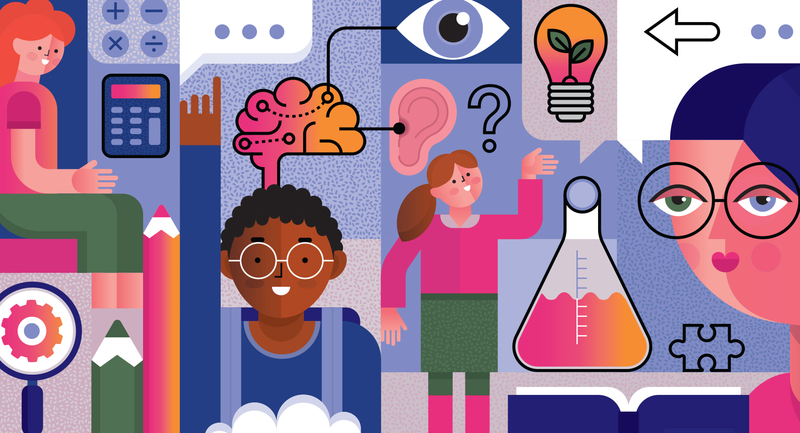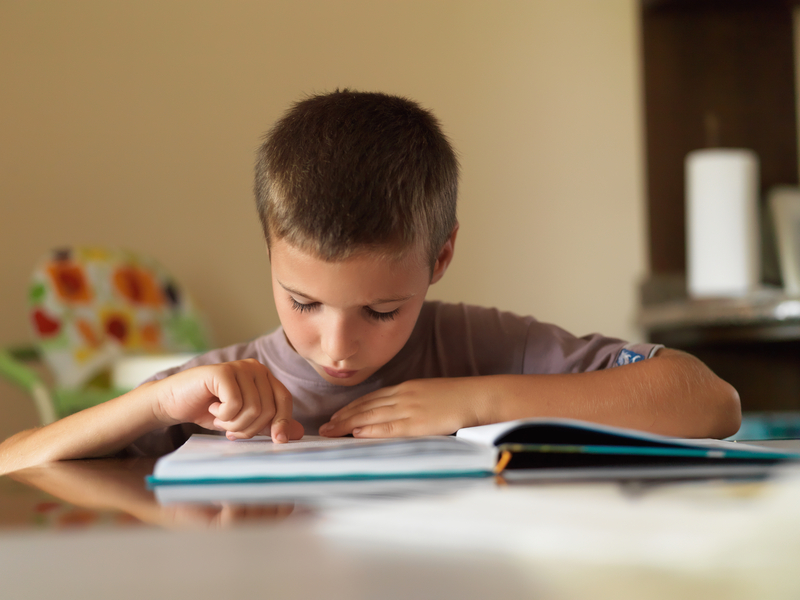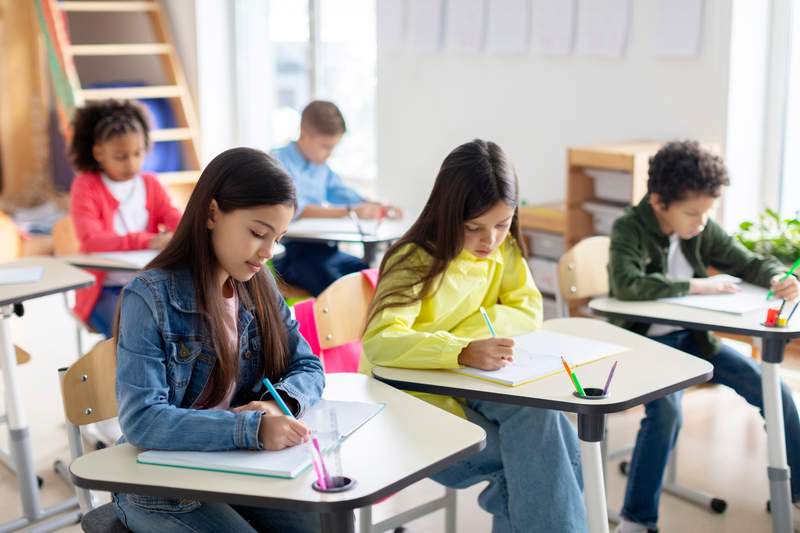Our school, P.S. 124, is a large public school in Chinatown, New York, with 1,200 children from pre-kindergarten through 6th grade. Each grade has approximately six classes, one of which is a gifted class. In pre-kindergarten, children are eligible to apply for the gifted program. They take an IQ test, and if their score is in the top 1 percentile, they are interviewed for the program. As only a limited number of parents apply, not all of the children are tested. Students in the gifted classes remain together through 6th grade, with few if any changes.
One of our gifted classes was plagued by bad chemistry from the start. Temper tantrums, scissors flying, and parent helpers screaming at children other than their own were typical occurrences. Few strategies had worked to alleviate the tensions. After the children's kindergarten year, their teacher left the classroom. After their 2nd grade year, their teacher left the profession. No teacher was willing to take on the challenge for 3rd grade.
The consensus was that the children should be split up. So, the two of us created an unconventional plan. If we could split the class in two, fill the remaining seats with children from the mainstream, and collaborate in teaching the classes, we would agree to take on the challenge.
The 2nd grade gifted class was split, separating the volatile, the quiet, the needy, and the outspoken children in order to create a more balanced setting. The other four 2nd grade teachers nominated children they thought would be comfortable in this newly created setting; specifically children who were mature, independent, and motivated, and who would help serve as positive role models. And we wanted children for whom English was a second language, as well.
We ended up with two enrichment classes; one had 11 children from the gifted class and 16 from the mainstream, and the other had 11 children from the gifted class and 17 from the mainstream.
The Weeks Before
The two of us wanted to use our classes to develop a case study to share the results of our untracking. We collected data throughout the school year by regularly keeping journals that contained anecdotal records of social interactions and the effects of cooperative learning. We compared the children's performance levels in a variety of subjects, including reading, writing, math, science, and art.
Because neither of us had ever worked so closely with another teacher, we were a little apprehensive. And we both felt nervous about our classes. How would we integrate our groups of children—one group had already been together for three years. Would the parents work against us by discouraging their gifted children from interacting with the other children? Would it be difficult to start fresh? Would the mainstream children keep up with the gifted children? Would the ESL children keep up with the rest of the class?
Before the school year began, we started planning how the team teaching would work. We decided to initially team by planning the same themes and sharing ideas for all curriculum areas. We would start the teaming ourselves and gradually include the children. Our plan was to keep the children separate until each group had developed a community within the classrooms and would not be tempted to fall into old patterns with former classmates. We believed that this community-oriented environment would help the diverse populations in our classrooms work together.
School Begins
On the first day of school, we each conducted a class discussion focusing on the question “What is a community?” Our children created lists of rules for the classroom community, including “cooperate” and “help one another.” We established a value that would carry them through the year: Everyone has something to learn and something to teach—including the teachers.
To create the sense of community, we placed the desks in clusters of five or six, each with a Sharing Basket that contained markers, pencils, erasers, scissors, and glue. We also fostered collaboration throughout the curriculum areas. In both of the larger thematic units, Japan (social studies) and Space (science), the children worked in groups of two or three to research topics of interest. Math included a variety of problem-solving activities that the children routinely solved together.
Modeling also encouraged collaboration. We consulted each other throughout each day on curriculum decisions, questions about the children, and suggestions for improving lessons. We wrote our letters to parents together and shared materials, books, and ideas. The children observed this teamwork and understood that working together was a value we both acted upon.
Assumptions Challenged
Because we tried to divide the gifted children equally by their personality traits and we each had a random sample of mainstream children, we assumed that both classes would have similar dispositions. We were wrong.
Each class had a distinctive energy level. One class was quiet and calm and needed a lot of encouragement to participate. The other class was boisterous and outgoing and always willing to participate in group discussions.
Just as when you mix chemicals, a variety of reactions occur, when we mixed children together, a unique class compound was formed. Also, because we had different styles, personalities, and expectations, our students reacted differently with each of us. As different as they were, we loved our classes.
From the start, the children mingled socially and academically, and it was impossible to tell which were from the initial gifted group and which were not. After each of our five student teachers had been in our rooms for six weeks, we asked them to list the children they believed had been in the gifted class for the previous three years. All five student teachers had difficultly distinguishing the gifted children from the mainstream children. None of them had more than 60 percent accuracy.
The positive effects this new environment had on the children encouraged their parents. Parents soon joined in our community of learners by contributing materials, helping on trips, and supporting the children's efforts during projects.
Three Children
The children had changed a great deal since 1st grade. Their maturity and the integration of new students had certainly helped, but they were now very different individuals with new role models and new friends. Three children are examples of this.
Vinnie. An excerpt from Julie's journal provides an early impression of Vinnie as a 1st grader: Then there's “Vinnie,” who really doesn't belong in my class.... He acted out his insecurities for the first three weeks.... The first week, he punched a child, threw a book at Sally, threw crayons that hit me, and flushed his orange down the toilet!
With a year's growth and the integration of new students, Vinnie thrived in 3rd grade. He has become confident in his strengths and no longer provokes other children.
Both his former classmates and teacher had to reconstruct their definitions of Vinnie, from mischievous to cooperative. Old patterns had been broken, and Vinnie had a new enthusiasm for learning.
Kay Ling. Kay Ling came from a Chinese-speaking household and did not speak English fluently. She participated regularly, however, and did not feel threatened by her classmates. She shared her writing, and loved to read aloud in class. Cooperative learning gave Kay Ling the chance to verbally share her ideas in a smaller group, and the language-rich environment helped all the students grow as readers, writers, speakers, and listeners.
Irwin. Irwin had problems relating to his classmates socially. He often played by himself and did not shine in any academic areas. But Irwin was a terrific artist. During project time, Irwin's classmates wanted him to join their group. They recognized and appreciated his artistic abilities. Irwin's confidence grew and he became more adept in social skills by the end of the year.
In both classrooms, untracking had positive effects on both gifted and mainstream children. Because much of our day was spent working in collaboration, children had opportunities to be helpers in subjects in which they were strong, and to be helped in areas in which they needed support. On no occasion were the helpers all gifted children and those being helped all mainstream. This even mix helped instill a positive self-image in each of the children.
Test scores also reflected this mix. The scores and grades of the gifted children represented the range of scores in both classes. For example, the 10 strongest children in any curriculum area were frequently half gifted and half mainstream. The 10 weakest students also reflected this statistic.
It All Comes Together
From the beginning of the year, the benefits of splitting up the gifted class were apparent and they snowballed as the year went on. We both were pleased with the results of this experiment, and we felt equally proud of having explored new territory by working together so closely.
Both of us felt that our teaming helped to minimize the isolation that teachers routinely face. We had each other to bounce ideas off of and the necessary support to take risks. Daily conversations about student dilemmas, curriculum issues, and parent involvement created the parameters for our own staff development.
The success of our experiment in combining gifted and mainstream students proves the benefit of dispensing with labels. Administrators, teachers, and parents need to keep an open mind when grouping children and recognize the positive results that can come out of a diverse environment. We have begun to pave a new path through untracked territory, preparing our children for the experiences they will face as members of a heterogeneous society.







